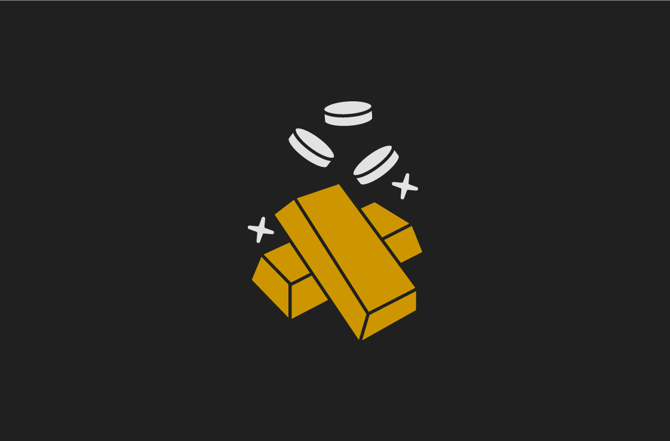Strong Dollar Pushes Gold Towards Six-Month Lows

The price of gold tumbled for a fourth consecutive session on Monday, pushing the precious metal toward its biggest monthly fall in nearly six months.
The drop was fueled by a strengthening US Dollar that continued to rise on the back of important central bank meetings. The Dollar index was holding steady at 18-month highs.
Spot gold was down 0.2% at $1,788.41 per ounce. The commodity has declined more than 2% so far this month. This makes bullion more expensive for holders of other currencies.
The US Federal Reserve plans to raise interest rates in March. All signs point to the fact that key policy makers believe the US economy will not be severely affected by Omicron and will continue to recover, despite lingering pandemic-era challenges.
What does this mean for me?
Although gold is considered a hedge against inflation, interest rate hikes would raise the opportunity cost of holding non-yielding bullion.
As a commodities trader, you will come to understand that major investors view gold and other important commodities, like oil, as insurance against underperforming or volatile currencies.
Investing in commodities is considered a safer bet than the more dynamic FOREX and stocks trading. However, commodity trading is sometimes a turgid affair, with many of the factors that drive commodity trends having their origins in slow-burning geopolitical maneuvering.
In the case of gold, investors are happy to buy the metal for its stability and resistance to volatility, but are underwhelmed by the low yields.
More News

Copper Prices Head Into Uncharted Territory

Silver’s Surge Shows Rate-Cut Bets and a New Layer of Trade Risk
.webp)
Gold’s Breakout Year Sets a High Bar for 2026
.webp)
Europe’s Gas Chill Turns Into a Price Rout

The Rare Earths Boom Driving a New Global Supercycle
.webp)
Brent Rises as Fresh U.S. Sanctions Choke Russian Oil Exports

Global Wind Market Set to Hit $304 Billion by 2029
.webp)